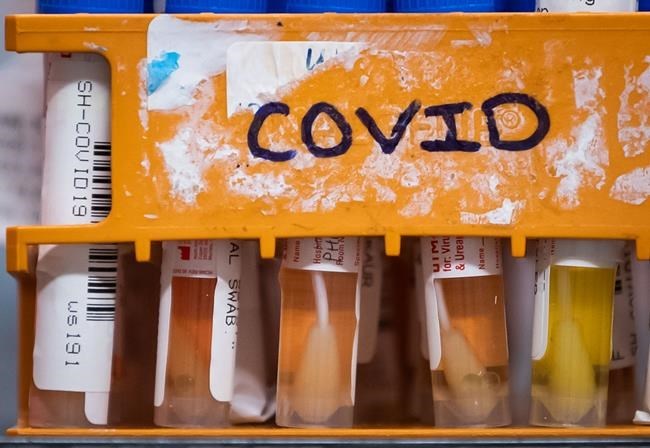WINNIPEG — David Monias has barely slept in weeks.
The Pimicikamak Cree Nation chief says his phone rings off the hook day and night from people fearful the COVID-19 pandemic is silently spreading into the isolated northern Manitoba reserve.
“This is a war,” Monias says. “But it's a different type of war. It's not an enemy you can see.”
There’s been a massive surge of COVID-19 infections in Manitoba over the last few months, prompting increased restrictions and stark warnings from health officials. In recent weeks, a significant proportion of those new cases have been in First Nations populations.
The Manitoba First Nations COVID-19 Pandemic Response Coordination Team reported Friday there were 838 active COVID-19 cases among First Nations people — 20 per cent of all active cases in the province.
Of those, 442 are on reserves.
Pimicikamak, which is also known as Cross Lake, was one of the first reserves to declare a state of emergency and go into lock down when COVID-19 first emerged in Manitoba in the spring.
The community is all too aware what can happen if a deadly pandemic creeps in, Monias says. About 46 per cent of the First Nation’s population was killed during the 1918 Spanish Flu.
“We remember that,” Monias says with a stern tone. "We have to make sure that doesn't happen again."
Many other Indigenous communities have the similar haunting memory. A mass grave for those who died of the Spanish Flu in Sagkeeng First Nation, just north of Winnipeg, also serves as a reminder for its members.
Monias says this past summer went by with very few cases of COVID-19 in the province, and none in its northern region. Caution began to wane.
A funeral in October changed everything for Pimicikamak.
Unknown to those mourning, the chief says, a person who attended the funeral from outside the community was infected.
"It only takes one," Monias says with a deep sigh.
COVID-19 had gotten in.
About 6,000 people currently live on the reserve and, as of last week, hundreds were isolating, the chief says. At least 32 people linked to the funeral tested positive.
One of those confirmed cases is a man who lived with 20 other people, Monias says. The man and many others were flown out of the community to alternative isolation accommodations, because of a lack of room and access to proper health services.
Dr. Marcia Anderson, a member of the First Nations COVID-19 task force, says the growing rates of COVID-19 among First Nations people is not related to genetics and there is no evidence First Nations are less compliant with public health rules compared to non-Indigenous people.
Rather, she says, the high proportion of Indigenous COVID-19 cases is due to “historic, current and ongoing inequitable access to the underlying determinants of health.”
First Nations people are more likely to live in overcrowded and inadequate housing with poor ventilation. They experience higher rates of income insecurity, which impacts their ability to avoid risk. They also have less access to health care, which has been linked to higher rates of underlying chronic conditions.
Anderson adds that data is also starting to show more severe outcomes for First Nations people with COVID-19.
Last week in Manitoba, there were 42 First Nations people in hospital with COVID-19 — 26 per cent of provincial hospitalizations. Nine of them were in intensive care. They ranged in age from 19 to 82.
Federal Indigenous Services Minister Marc Miller warned at the start of October that the second wave of COVID-19 would hit Indigenous communities harder. At that time, there were 123 active cases on reserves across the country.
As of Thursday, there were 542. More than 80 per cent of those cases were in Manitoba.
NDP member of Parliament Niki Ashton, who represents the northern Manitoba riding of Churchill-Keewatinook Aski, wrote a letter Friday calling on the chief provincial public health officer to consider increasing restrictions for the area.
The test positivity rate of First Nations people in Manitoba is at 11 per cent. It’s about nine per cent for Winnipeg — which was placed in red on the pandemic response scale last week.
“I am hearing from many communities that there is the real potential for a major outbreak in northern Manitoba,” Ashton wrote.
“We have already seen a number of community outbreaks and there is a very real concern that this could spread to other communities very rapidly.”
This report by The Canadian Press was first published Nov. 8, 2020.
Kelly Geraldine Malone, The Canadian Press



